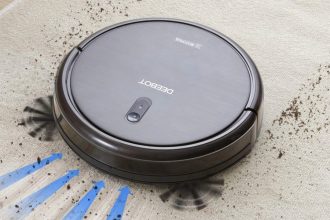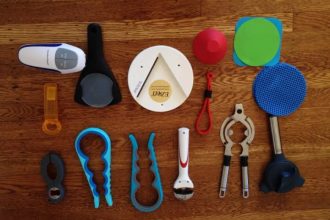For many people, one of the most important appliances in their home is a washing machine. Many households have a top load washer and a front load washer. Which type of washer should you buy? This blog post will compare and contrast the two types of machines so that you can decide which one best suits your needs.
What Are Front Load Washers?
Front-load washers are a style of washing machine that features a door on the front of the unit through which the user loads clothes, and unlike top-load washers, they ” literally ‘tumble’ the clothing during the wash cycle.”. Front-loaders also use significantly less water than top-load washers since they don’t agitate the clothing.
Advantages
The most notable advantage of a front-loading washing machine is its efficiency, which is often measured in terms of the amount of water used during a wash cycle. This is due to the fact that they lack an internal agitator and add clothes only after filling with water that flows in a circular pattern around the drum of the washing machine. Another advantage, though more related to the counter-top models, is that they have a lower operating height than their top-loading counterparts, which can be advantageous if your home is built on a slab or has low overhead clearance in the utility room.
Disadvantages
One of the more notable disadvantages to front-load washing machines is their price point, which often tends to be higher than that of a comparable top load style washer. Additionally, in contrast with top-loading washing machines, many front loading models require specialized detergent that’s formulated for low-water usage. This can lead users to believe that the load will be less clean than a regular detergent.
What Are Top Load Washers?
Top-loading washing machines have been the industry standard for as long as most of us can remember. They feature a control panel on the front or top of the unit and require users to manually add clothes, along with detergent and softener, before selecting the appropriate cycle and start/pause button. Unlike front-loading washers that use less water since they don’t agitate clothing, top loaders soak clothes in a pool of water for the length of the cycle. This is different than front load washers, which circulate water around the laundry for washing.
Advantages
One of the biggest advantages of top-loading washing machines is the price point. Most models retail for well below $700, and sometimes less than half the cost of a front loader. Another advantage is that they tend to use more water during a wash cycle which can translate into cleaner clothes if you live in an area with hard water, well water or you don’t use a water softener. The final advantage is their compact size which tends to be ideal for small spaces or tight budgets.
Disadvantages
One of the most notable disadvantages of top-load washing machines is their lack of efficiency due to their design. Since they require users to manually add clothes, along with detergent and softener, after filling the unit with water that flows in a circular pattern around the drum of the washing machine they use a lot more water than front loaders. Another downside is their relatively poor spin cycle which can lead to wetter clothing if you don’t have a dryer or clothesline handy.
Top-Load vs. Front-Load Washer: Major Differences
Key Features
Top-loading washers are the most common type of washing machine on the market today, and most models still use an agitator, which is a central device that rotates with the water inside to move clothing along with detergent. It can be found in either vertical or horizontal designs, but they both rely on a mechanical action to clean the clothes.
Top-loaders are also more common in compact spaces, such as apartments or small homes, because they don’t require much headroom to work properly. However, most top load washers use significantly more water than their front-loading counterparts and completely soak the clothing in water during a cycle which can lead to odor if not dried promptly.
Compared to top-loaders, front load washers are more efficient and use less water. The design allows the user to open the door mid-cycle for easy access. Front-loading models generally have a lower operating height than their counterparts, which makes them ideal if your home is built on a slab or has low overhead clearance in the utility room.
The downside is that front-loaders are often more expensive than top-load washers, and require special detergent which can be twice as much as regular brands. Front loading washing machines also have a tendency to produce excessive foam because they use less water during the wash cycle, so using an anti-foam agent in the water is recommended.
Although they tend to be more expensive than top-loaders, front load washing machines are usually more energy efficient and can save up to hundreds of dollars over the lifetime of the unit. They also use significantly less water during a wash cycle which can lead to cleaner clothes if you live in areas with hard water or well water.
Appearance
The design of a washing machine can also affect the appearance of your utility room. Top loaders tend to be wider and shorter than front loaders, as well as more traditional in appearance with a door that opens up and down. This makes them ideal for those who want an appliance that blends into their home’s decor, or those who have a narrow space for a washing machine.
Front-loaders are built with a door that opens from left to right which can be more compact depending on how it is installed, but they have a vertical design that takes up significantly less floor space compared to their counterparts. This makes them ideal if you have a small laundry room or zero clearance in the utility room.
Manuals, Setup and Installation
Top loaders are often more difficult to assemble than front load models because they usually require two people to install them due to the high weight of the drum. However, some top load washers can be easily set up by one person using the inground installation kit without having another person available for assistance.
Front loaders are usually easier to set up, mostly because the drum is much lighter. However, most require a water supply or drain connection in order to operate properly. Some front load washers also need an electrical outlet within three feet of the machine in case there is not one already installed in your utility area.
Cost
The initial purchase cost of a washing machine depends on the type you choose. Top loaders are usually less expensive than front loading models because they do not require as much technology and construction.
Price is a major factor when choosing one type over the other. Front load washers tend to be more expensive than top load models which can help your utility bill if you use less energy with your appliance, but they may cost you more up front.
Which Is Better?
As you can see both front and top-loading washing machines have their own unique advantages and disadvantages. If you’re looking for a high-efficiency unit with the ability to use less water, you’ll want to look at a front loader. However, if your priority is getting great cleaning performance without breaking the bank, investing in a top loader will be your best bet.
How Does Front Load Vs. Top Load Washers Clean Clothes?
Front load washers use a conical design where clothes tumble in a large drum. This allows the clothes to move freely and comfortably with water, detergent and softener added along the way.
Front loading models require less water because of how the clothing sits inside of the machine during washing. In front-loading units, your laundry will be more evenly saturated throughout the entire cycle. This also means that clothes will come out of your front load washer wrinkle-free because there’s no need for an agitator to keep them moving while they wash.
Top loading washing machines are shaped like a barrel which holds clothes in place during the spin cycle. If you prefer putting clothes into a machine and going about your daily business, a top loader is a better choice for you. Unlike a front load washer that requires minimal work from the user, a top-load model gives you full control over how much water to add during the cycle.
In both models, clothes come out clean because they move from one chamber to the next while being cleaned, rinsed and spun. Soap gets washed away in the final step, leaving nothing but clean clothes behind.
Conclusion
Front-load washers are generally more expensive than top load washers, but they use less water and energy. The trade-off is that front loaders tend to be louder than their counterparts. You might want to consider the pros and cons of both types before making your purchase decision. If you need help deciding which type of machine would work best for your laundry needs, we can offer advice on what features or materials matter most in a washing machine. We’ll even set up an appointment with one of our appliance experts who will come out to your home and give you a hands-on demonstration of each type!







